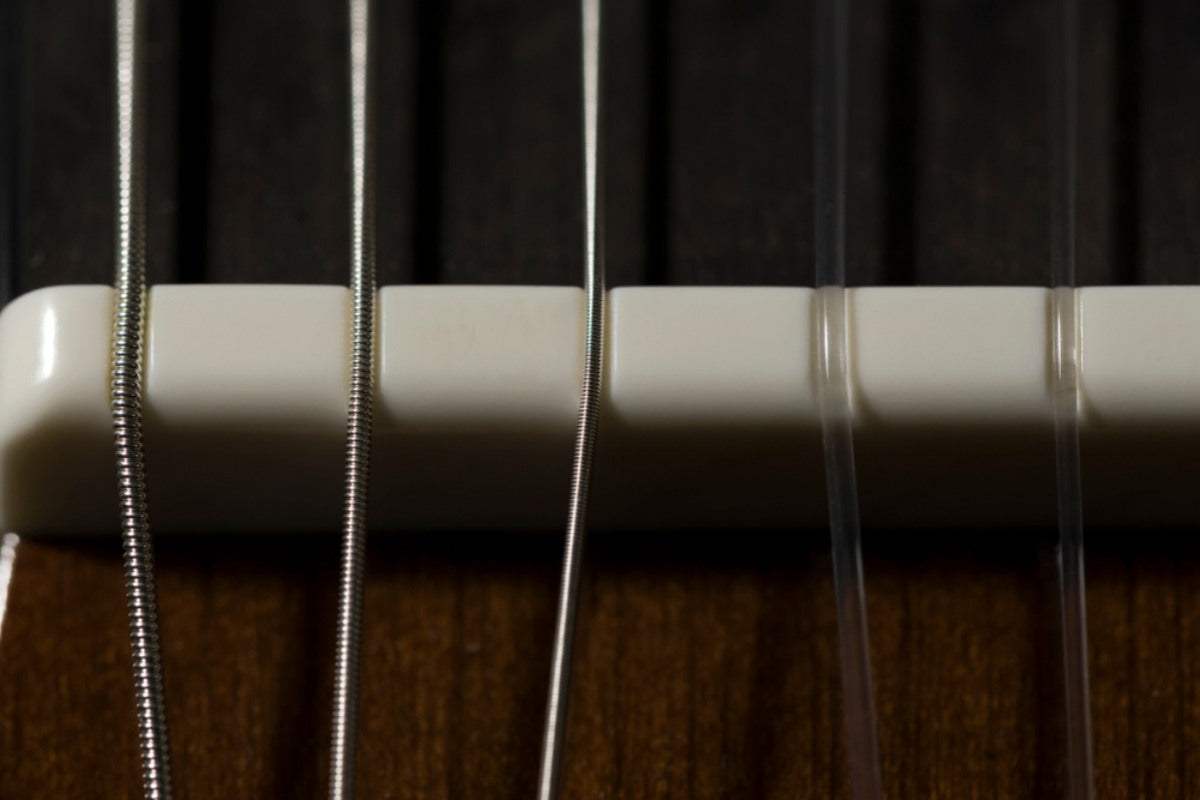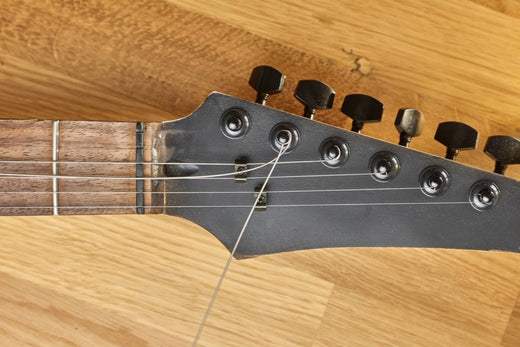You’ve just tuned your guitar to perfection using a quality tuner and then you start playing your favorite solo up the neck and something doesn’t sound quite right. You recheck the tuning, and every string is perfectly in tune, so what’s the problem?
Acoustic or Electric Guitar Intonation
Most acoustic guitars come with a non-adjustable bridge. This is either a straight piece of plastic or bone or one that certain sections along its length, for example, underneath the B string, set back slightly to aid intonation. These have been designed to offer the best compromise in terms of overall intonation across the guitar neck, and on the whole, can not be modified. If you are having major issues with your acoustic guitar, then I would recommend you take it to a good luthier. They may be able to sort them by either adjusting the neck or creating a customized bridge.
As for electric guitars, although there are numerous bridge designs, the majority provide precise adjustments for every string to be perfectly intonated. There are exceptions such as old Telecasters (and reissues) which only have three sets of saddles as opposed to the usual six, so a slight compromise has to be made.
Also, some guitars, such as older Gibson Les Paul Juniors have a combined tailpiece and bridge with short metal strips on top used as the bridge points. These are again not adjustable and the intonation on these guitars can be terrible. Thankfully there are now aftermarket products that you can use to replace them which offer better tuning stability.
What causes intonation problems on a guitar?
Before I get to how to fix the problem, let’s take a quick look at the causes. If you have just bought a new guitar, then how accurately intonated it is will probably depend on its cost. Cheaper guitars are rarely intonated properly, more expensive ones are intonated before leaving the factory, and again when they get to the distributor/retailer. However, there are exceptions, so it’s always worth checking.
If you have bought a second-hand guitar then it will depend on how well the seller took care of the instrument, if they had it set up by a good luthier regularly then it should be OK. If, however, they bought it, took it home, and have never done anything to it apart from play it and change the strings when they break, then it is probably in need of some work.
There are a few other factors, such as a warped neck, using a different brand of strings, moving to a lighter or heavier gauge of strings, or fret or nut wear that can affect the intonation.
Also, your strings can affect your intonation over time. Guitars are usually intonated when a new set of strings has been put on. As time passes, these strings not only lose their sparkle but also lose their intonation to some degree. But don’t worry, all you usually need to do to get your guitar back perfectly intonated is to replace the strings with some new ones.

How to Adjust the Intonation on Your Guitar
The process is quite simple and you’ll probably only need a new set of strings, a small flathead or Phillips screwdriver (depending on the bridge screws), a good tuner, and about 10 to 15 minutes of your time.
Start by replacing all your strings and then place the guitar on your lap as you play normally. Do not adjust the intonation with the guitar on its back, this can lead to inaccuracies. Then tune every string as you normally do, making sure that each one is perfectly in tune hitting the dead center of the display if you are using a tuner.
Then play the 12th fret of the low E string with your finger and check the tuning. It should be exactly the same as the open string (or use the 12th fret harmonic for an even more accurate reading). If the fretted note is slightly sharp, take your screwdriver and turn the screw in front of the saddle (or behind it on some guitars) anti-clockwise about a quarter of a turn to move the saddle back slightly, to see if that improves the tuning. If so, turn it another quarter turn, then check again. Do this until the note on the 12th fret and the open string (or 12th fret harmonic) are the same.
You will probably need to re-tune the open string every time you make an adjustment, so now return the string to perfect tuning before you check the 12th fret.
If however, the note was flat or when you turn the string anti-clockwise, the intonation gets worse, then turn the screw a quarter turn clockwise to see if that improves it. If so, make another quarter turn, re-tune the open string, and check it again. Continue this process until the open string and the note at the 12th fret are both exactly in tune.
Now, tune all the strings again, making sure that each one is perfect. Then start work on the A string by repeating the above process until both the note on the 12th fret and the open string (or 12th fret harmonic) are exactly in tune.
Then repeat for all the other strings, remembering to tune them all before starting on the next string. Once you have completed them all, it is worth going back to the low E string again, to make sure it is still perfectly intonated, if not make a minor adjustment.
Just out of interest…
We use the 12th fret, or better still, the 12th fret harmonic (twice the frequency of the open string, therefore, also the same note as the 12th fret) because it is the center point between the nut and the bridge. If the intonation is correct here it is more than likely going to be correct all over the neck.
Also, on a more practical level, it is easier to check when the fretted 12th fret, the open string, and the harmonic, are all on the same note.
A word of warning:
Be careful not to strip the screwheads when making adjustments, if you are having any problem with turning them, lower the tension on the string, turn them a quarter turn, and then tune the string back up to pitch.
Wrapping it up
So, that’s it, your guitar should now be perfectly intonated all across the neck, so everything you play should sound as good as it possibly can. Thankfully, you don’t need to adjust the intonation that often, get it right once and it should be OK for a good while.
However, remember that if you change anything such as your string gauge, lower or raise your tuning, or start playing in a different environment, it is well worth checking to see if the intonation is still correct, if not, you now know exactly how to fix it.
Please share this article if you enjoy it!
Be sure to join our FB Group Guyker Guitar Parts & Accessories Community to share your ideas! You can also have connections with like-minded guitar players, Guyker updates as well as discounts information from our FB Group.





